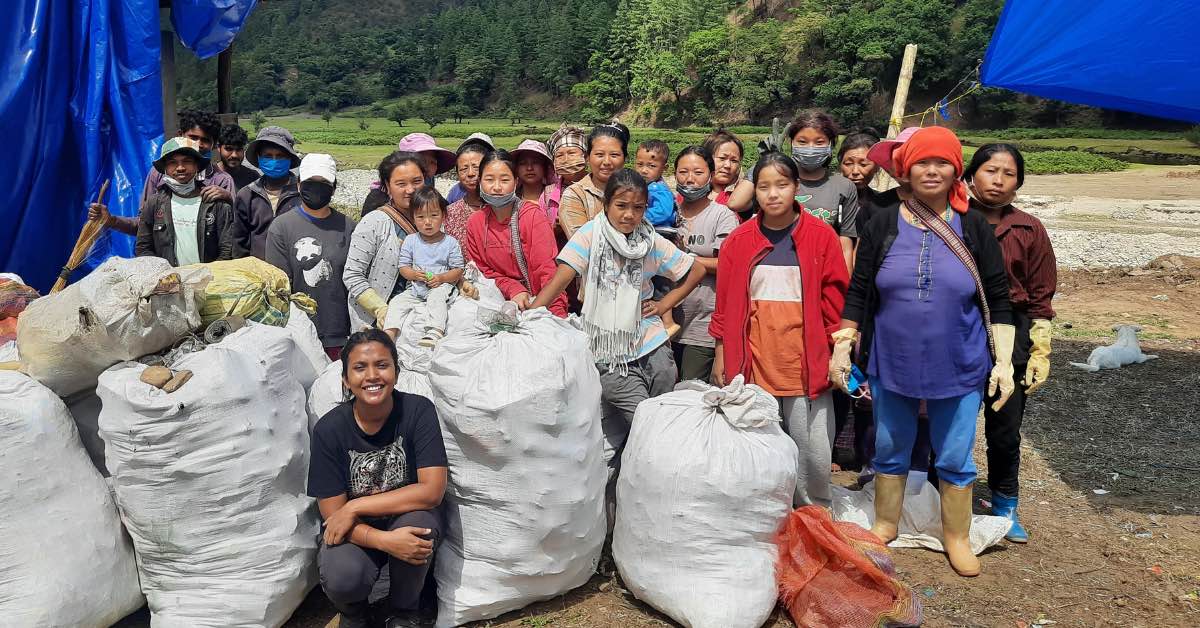Nestled amidst the towering peaks of the Eastern Himalayas, Sangti village, a pristine paradise, is home to the Monpa people — a vibrant community steeped in tradition. Yet, even in this idyllic setting, the spectre of pollution has cast a long shadow. Over the years, the village’s residents have witnessed the Sangti river, once flowing crystal clear, burdened by the unwelcome weight of plastic waste.
But like the beautiful black-necked crane soaring above the majestic Himalayan hills, the residents of Sangti valley have taken flight against the encroaching tide of pollution. If you visit the area, you’ll find yourself on the cusp of a village transitioning into a town.
In 2018, Ittisha Sarah, 32, stumbled upon this hidden gem. Her visit as a tour instructor for a group of school kids travelling from Assam — after completing her Social Design course at Delhi’s Ambedkar University — became a reverie she would catch on to two years later. This would lead to the Sangti Project — an attempt to balance development with sustainability.
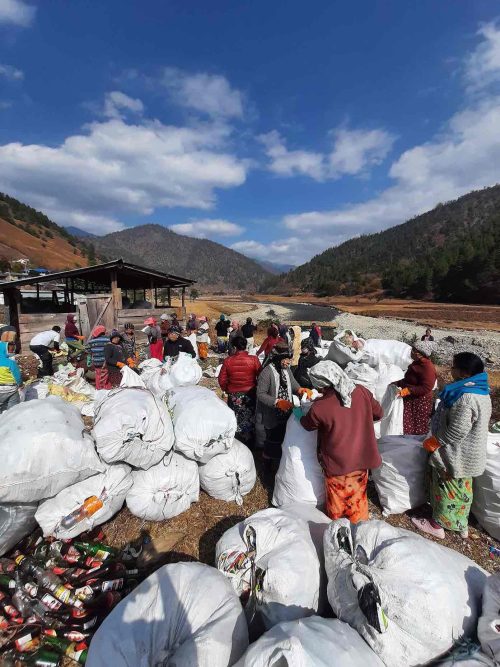
Today, the people of Sangti, in Arunachal Pradesh’s West Kameng district, dedicate three days a month, based on the Buddhist lunar calendar, to ensure all waste in the village is managed efficiently. Ittisha and her organisation ‘Northeast Waste Collective’ have received recognition from the district administration and the State Government for establishing the community-based management model aimed at making Sangti a zero-waste village.
“They (Northeast Waste Collective) have been doing good work; and the best part about them being here is that they are doing it considering the local sentiments,” says Akriti Sagar, Deputy Commissioner cum District Magistrate, West Kameng.
But as is the case with all good stories, the Northeast Waste Collective’s journey was fraught with challenges and lessons from failures.
From student to sustainability champion
Ittisha’s journey as a waste warrior began after she completed her bachelor’s degree in economics from Pune’s Symbiosis Institute of Technology. “I realised that this wasn’t my cup of tea. I didn’t see myself working in a corporate setting. I didn’t know what to do next, but I did know what ‘not’ to do,” she shares.
“I stumbled upon a course on social design offered by Ambedkar University, Delhi, and I had no idea what it was then. It was my first time hearing the term, but the design aspect intrigued me,” she shares. “The combination of ‘social’ and ‘design’ piqued my curiosity, so I applied for the course. It gave me the opportunity to step outside the classroom and engage directly with people, seeking real-world solutions to everyday problems.”
In 2014, a younger Ittisha from Guwahati, Assam, had no idea that nine years later she would be living in a rented house in Sangti, Arunachal Pradesh, working alongside villagers to promote sustainable living in the Himalayas.
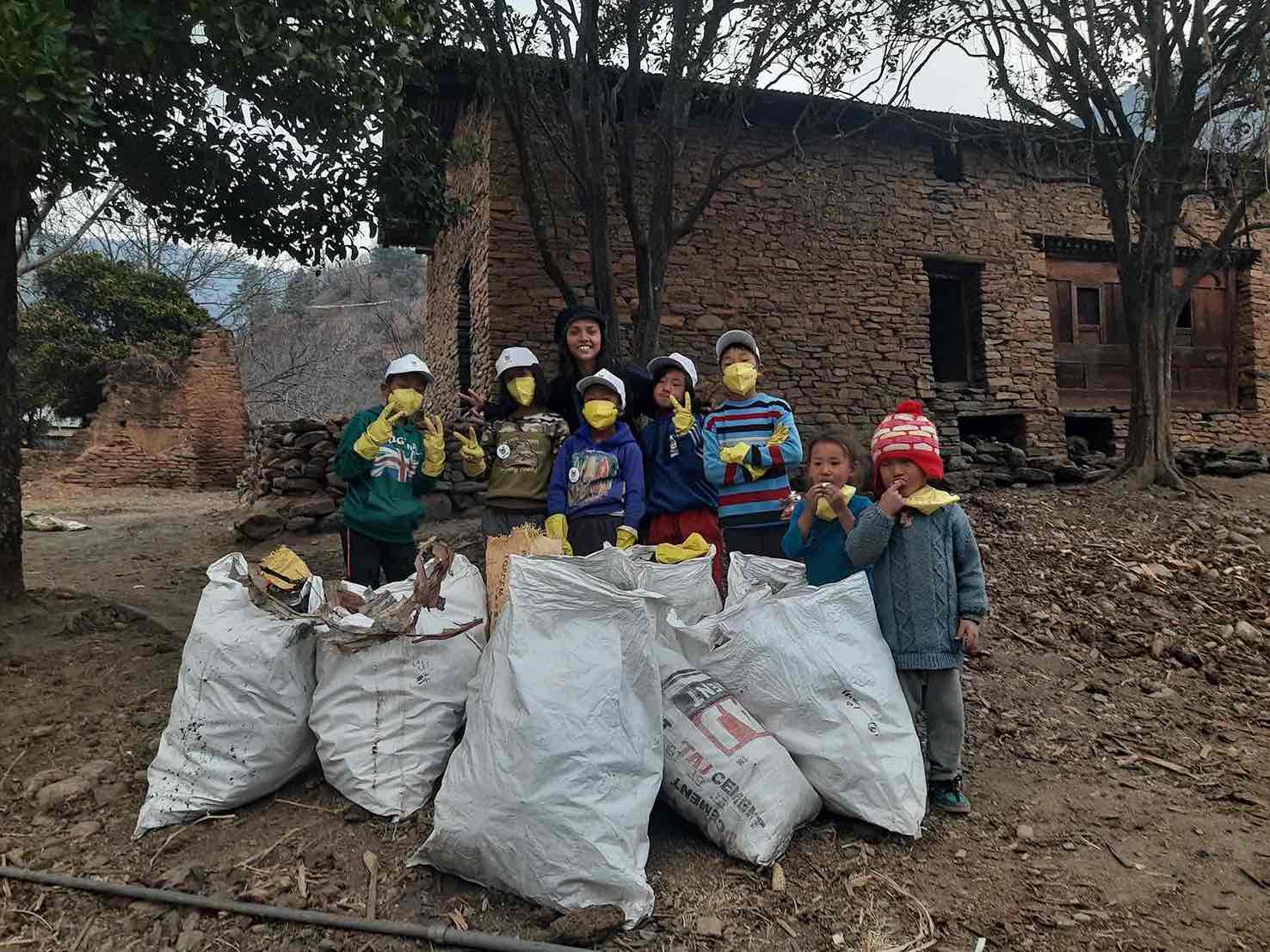
“I met Ittisha in Delhi while giving a talk on ‘Ride to Light’ [a fundraiser for The Batti Project], where I explained how we were generating funds,” says Merwyn Coutinho, co-founder of The Batti Project, under the Further and Beyond Foundation, which has illuminated several remote villages in Arunachal Pradesh.
“In Bengaluru, we told people about our work with The Batti Project in Arunachal and mentioned that we might need support. Instead of asking for donations, we encouraged them to contribute by donating their electronic waste,” he explains.
At this time, Ittisha had chosen e-waste as the subject for her dissertation. “Not many people were researching electronic waste at that time. So I would read a lot of research papers and then try to identify places where electronic waste recycling is happening in and around Delhi. Then I would go out onto the field to locate the places,” she recalls.
Apart from exposing her to e-waste, her on-ground work during her thesis also exposed her to solid waste and the many problems it brings along with it.
As per a 2021 World Bank report, waste generation in India is projected to reach 388.77 million tonnes a year by 2030. The ecologically sensitive Indian Himalayan Region (IHR) that stretches from Ladakh in the West to Arunachal Pradesh in the East is particularly vulnerable to the challenges this may bring.
The report reveals that municipal solid waste generation in IHR is approximately 14,450 tonnes per day or over 5.2 million tonnes per year. A majority of this problem plagues urban centres, but with the advent of tourism and development to cater to it, this number is expected to rise exponentially in the next few decades.
In 2017, after completing her dissertation, Ittisha decided to start something to address this problem in the Northeastern states. She partnered with Merwyn and Rajiv, initially working for The Batti Project, and soon establishing the Northeast Waste Collective.
“My journey to Sangti began in 2018,” Ittisha recalls. “A friend who runs a travel company, which was just starting out at the time, reached out to ask for my help.” She was given the role of tour instructor, leading a group of school students to a summer camp. “There was something about this place — it felt like deja vu. The river, the valley, the fields, everything seemed familiar,” she says, adding, “But even here, waste was a noticeable problem.”
With her background in waste management and social design, Ittisha couldn’t help but react to the environmental challenges she witnessed in Sangti. “All I could do was conduct a cleanup drive with the help of the kids. For the village, it was the first time such a thing was happening, where outsiders were coming and picking up their trash,” she adds.
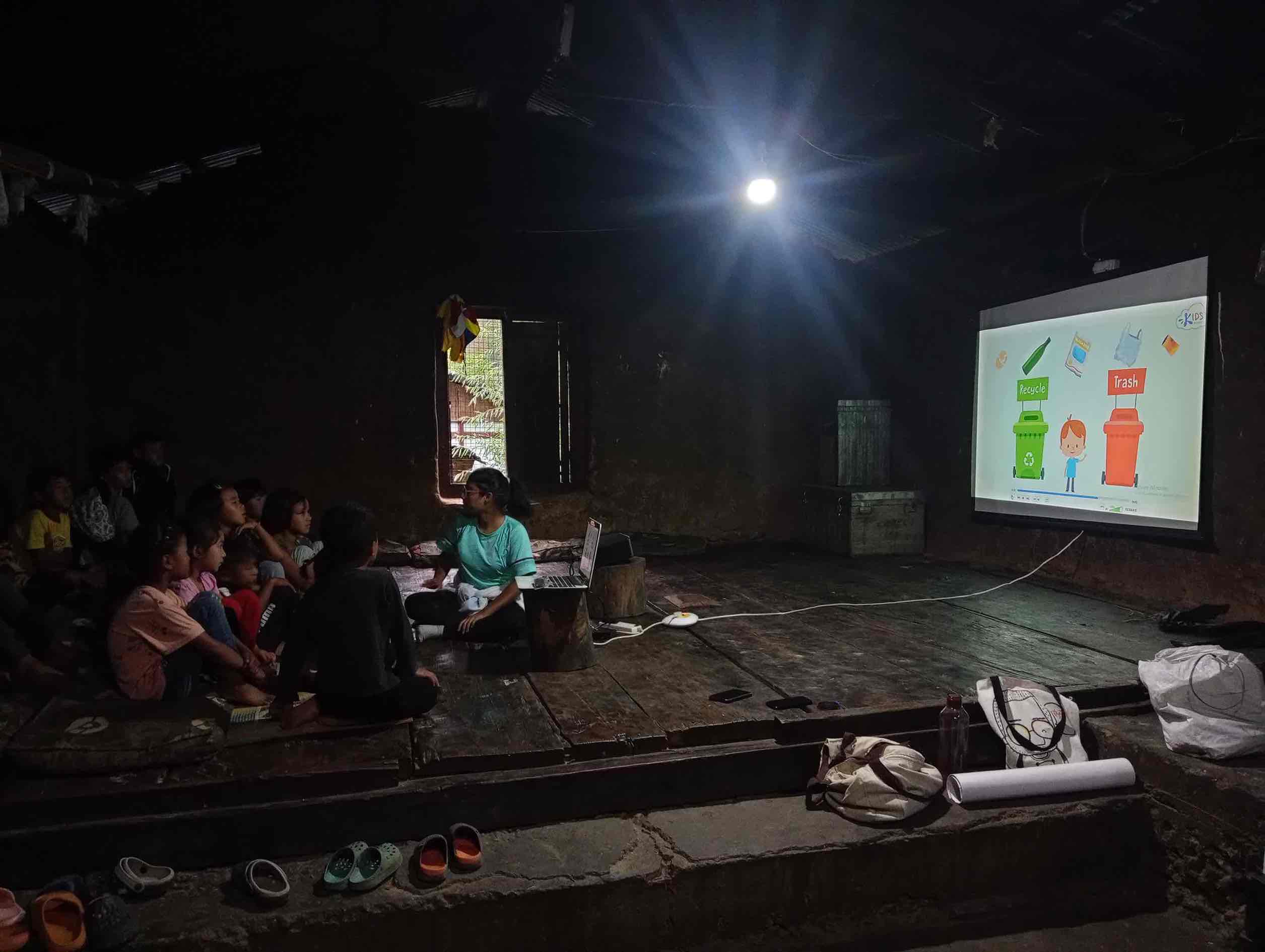
To make a more lasting impact, they decided to create a bamboo structure in the shape of a black-necked crane to serve as a growing waste installation. “The idea was to encourage the community to deposit their waste in this designated space, ensuring that waste is contained in one place rather than scattered around the area,” Ittisha explains.
“I couldn’t do anything more because there was so little time that we were there, and I returned to Guwahati,” she says.
“Then we did a few programmes in Arunachal Pradesh’s Bhalukpong and Roing,” Merwyn informs.
The opportunity to establish a community-led waste management system in Sangti arose when the group was contacted by community members seeking their assistance in organising a music festival. Neither Merwyn nor Ittisha were enthusiastic about the event. “The environmental impact of these festivals in these pristine locations is not really great,” Ittisha explains.
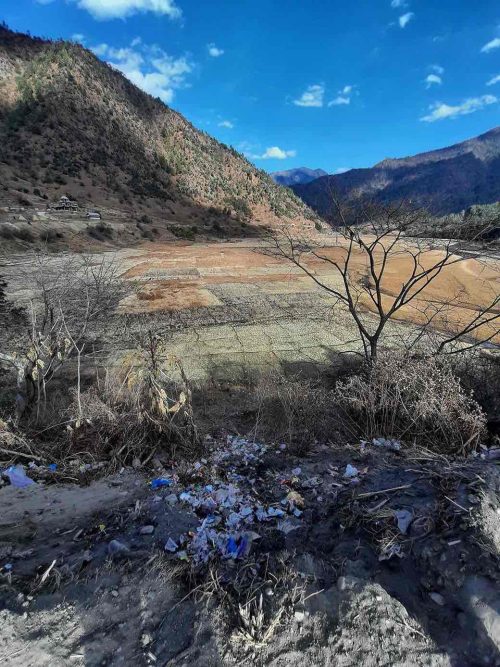
“I’ve been part of many festivals, and I haven’t found them to be beneficial unless a community comes together and decides on something more meaningful for their society,” Merwyn adds. “So, I told them that if you want to create a community programme, why not work around waste? We can help you set up a system where the community themselves can manage waste, and this festival could be a celebration of that achievement.”
“We explained to the community that we don’t really see the point in people from the city coming to remote locations to watch an artist perform who is also from the same city. Instead, how about having tourists come to your place to see what you have to offer?” Ittisha elaborates.
“Sangti is a place rich in culture and biodiversity, and their main festival is Losar (Himalayan Buddhist New Year). So we pitched, ‘How about opening Losar to the world?’ to them,” she shares. After giving it a thought, the community members of Sangti agreed and decided to give it a shot.
So, the Further and Beyond Foundation and the Northeast Waste Collective came together to partner with Hum (an initiative working to create community-driven ecologically-regenerative systems) and Namgey Khandu (a community member of Sangti village) to organise the Monyul Gathering in February 2020.
Ittisha and Merwyn took this opportunity to introduce the concept of waste management to the community. By the beginning of 2020, Sangti had started treading the path to becoming a zero-waste village. “For the festival, we set up the initial foundation for the waste management programme that is operational in Sangti,” Merwyn informs. “Sangti had become litter-free around that time. We built a mini facility where we could store the waste.”
However, it wasn’t long before COVID hit and the pandemic disrupted months of hard work.
Overcoming obstacles: Sangti’s journey to a zero-waste future
“After the pandemic struck, there was a pause,” Merwyn says, adding, “We were trying to raise funds through the Government to support the community in terms of infrastructure and other needs, but it failed miserably. The money was sanctioned, but not all of it reached the community. There was some corruption involved.”
After the lockdown was lifted, they decided to return to Sangti to assess the situation. Upon their return in 2022, members of the Northeast Waste Collective realised that they were back to square one. Ittisha and Merwyn reinstated the programme. “We tried to identify new leaders — new community members who could take responsibility and lead this task forward,” Merwyn informs.
At this time, however, Merwyn chose to distance himself from the project and Ittisha took full responsibility. By January 2023, Ittisha rented a house in Sangti and made the village her base. “When I had to do it all by myself, I realised that the kind of work we’re trying to do in Sangti requires driving a behavioural change and that it cannot be done if we’re not here,” Ittisha elaborates.
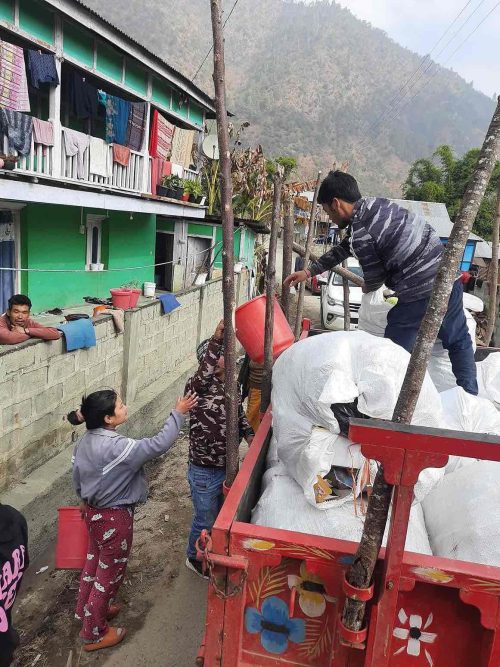
She started handling the project with the help of a few volunteers. “My aim was to design a community-led waste management system. But it is difficult to narrow down any single model when it comes to waste management in remote mountain villages,” she explains.
“What I was trying to do is ensure that all waste generated is managed, even if the community isn’t able to do it at this point,” she informs. “I would manage it for them while also identifying challenges and designing a system that the community could lead.”
Working closely with the villagers, Ittisha successfully established the foundations for a model that incorporated local traditions and ensured effective waste segregation and management without relying on external resources.
“They’ve been engaging with the community and trying to create awareness while also ensuring waste segregation at the source,” Akriti says. “That’s the basic idea of the community-led waste management model. It’s a social innovation project, and I believe if we continue and expand it to other areas, it can have a positive impact, at least from an awareness standpoint.”
The first step was to ensure complete waste segregation at the source. “We have achieved this in every household,” Ittisha says.
For the collection process, a committee of four women and four men was established to oversee the collection of waste from households. The committee members take turns collecting the waste and transporting it to the Materials Recovery Facility (MRF). To make waste management less burdensome for the community members, Ittisha decided to integrate it into the local traditions of the Monpa people.
“I tried to co-design this with the community in a way that no one really feels burdened with it,” Ittisha says. “It should be as easy and as convenient for them.”
The Monpas have four to five holy days a month according to their Buddhist lunar calendar. On these days, they do not even farm, and essentially, the days are observed as holidays. Three of these days — the 8th, 15th, and 30th — were designated for specific waste management tasks.
The 8th of every month has been designated as Social Service Day. On this day, one person from every household is mandated to participate in cleaning up their respective colonies. “We have appointed colony-in-charges,” Ittisha informs, adding that they are responsible for ensuring the cleanup drive operates smoothly.
The 15th and the 30th are dedicated to waste collection. “We also built a convergence with the regional sheep breeding farm,” she explains. “The idea was to minimise our dependency on external support and try and share resources that are already there within the community.”
The third step was a secondary segregation process, which takes place at the village’s MRF. “We have been able to integrate 100 plus women from self-help groups who volunteer their time and effort to do the secondary segregation of the dry waste that is collected from households,” Ittisha informs.
Currently, two PLFs — Sangti Valley and Namdroling — have taken charge of secondary segregation.
“With the help of the SHG women, we segregate the waste further at the MRF,” Dechen Paldon, president of the Namjoling PLF, says. “We divide the waste based on its composition and structure. Bottles, plastics, etc are separated here.”
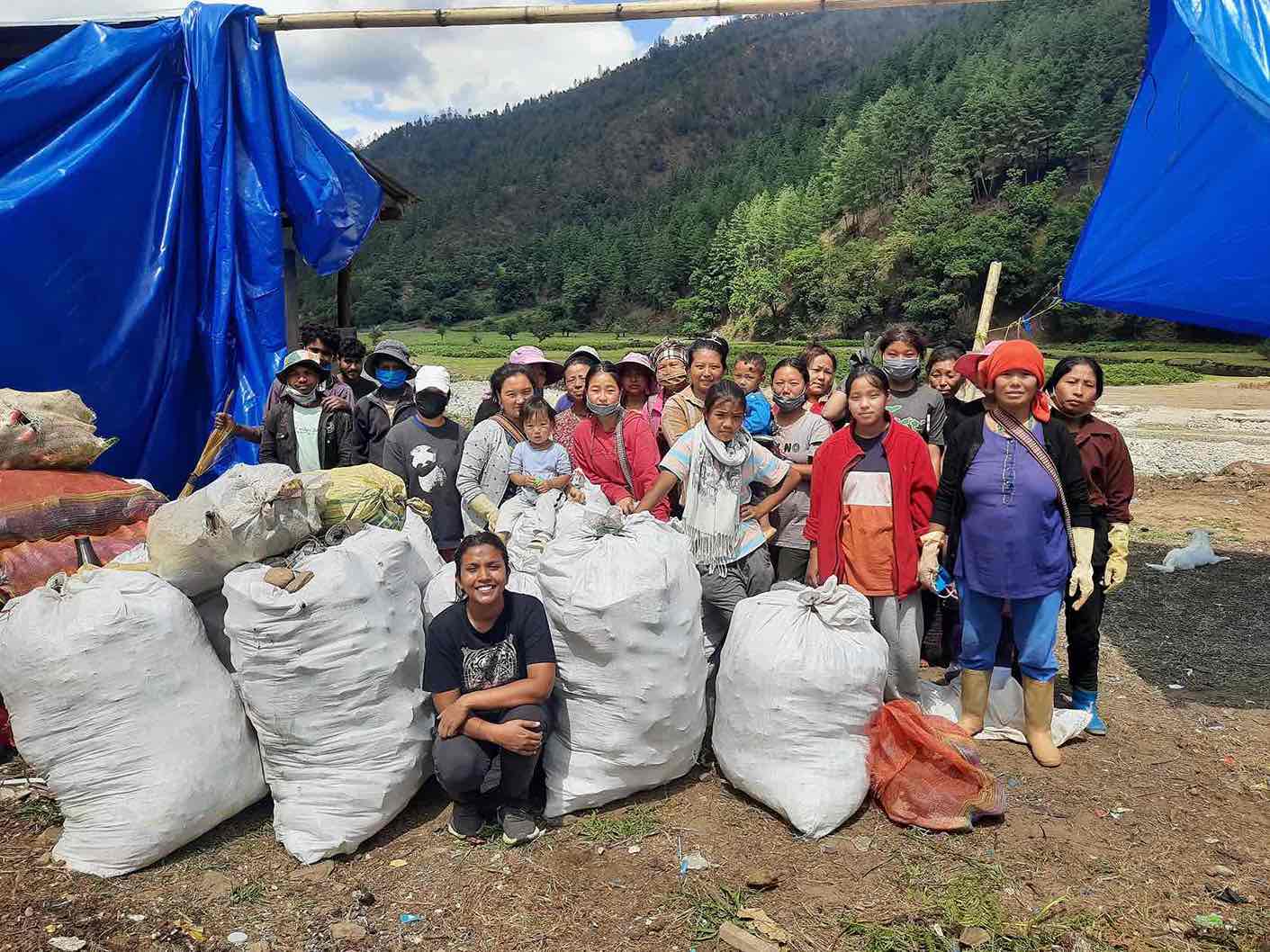
She also talks about the challenges they face during monsoons when the water can aid the growth of pests in the sacks. “Sometimes some people miss segregating the waste properly, or due to rains, insects and pests fill the sacks,” Dechen adds. “Sometimes it discourages women, and they opt out of the work. But in my PLF, I talk to them and tell them we are doing good and it will take time.”
Dechen expresses immense pride in being able to participate in keeping their village waste-free.
“Earlier, it used to be very dirty here. No matter where you looked, you could see plastics and bottles thrown. But today there is a huge improvement,” she says. “Of course, there are challenges, but we try to keep the women constantly motivated so that we can continue the good work.”
She is hopeful that as time progresses and the team is able to improve infrastructure, the process will become easier and see more active participation from the community members.
By working closely with the community, Ittisha was also able to convince the Gaun Bura (panchayat head) to put in place a penalty system for those missing community work on the three designated days without a genuine reason.
“A lot of work has gone behind organising, framing, and passing these rules,” Ittisha says, adding that she is hopeful that as more funds come in, they will be able to improve the infrastructure of the MRF and in terms of logistics.
“It has always been challenging,” Ittisha acknowledges. “To get people to work with waste, it takes a lot, especially the dry waste segregation bit. The whole thing will become easier when our infrastructure improves,” she adds.
The tourism conundrum
The major part of the Eastern Himalayan ranges in Arunachal Pradesh is among the most picturesque tourist destinations in India. As the easternmost state, it is the first Indian land to greet the morning sun, earning the nickname ‘Land of the Dawn-lit Mountains’. But with a higher influx of tourists, the ecologically sensitive region will inevitably see an exponential increase in waste generation.
Sangti village is no exception.
To accommodate and invite tourists, new buildings and infrastructure can be seen coming up in Sangti, gradually transforming it into a more urbanised area. This growth brings with it the challenge of managing increased waste production.
“As you know Sangti is an upcoming tourist hub, and there are lots of homestays that are mushrooming there. Geographically it’s a blessed and beautiful village,” Akriti says, adding, “So, there’s a lot of scope for tourism there; lots of restaurants and campsites have come up.”
To address this problem, the West Kameng administration is actively working to spread awareness. “First and foremost, it is the community that needs to take the lead; only the communities can educate the tourists not to litter,” Akriti says.
“These are community-driven areas, and here the feeling of community is quite high. Communities have been sensitised not to let tourists litter on the ground, and we have designated places where plastic waste can be stored. We then collect it and dispose of it at the appropriate site,” she adds.
Pema Sangay — who runs a homestay in the village and has actively embraced the zero-waste culture — says that all his guests are educated about the village’s zero-waste initiative and requested to keep their waste segregated as well.
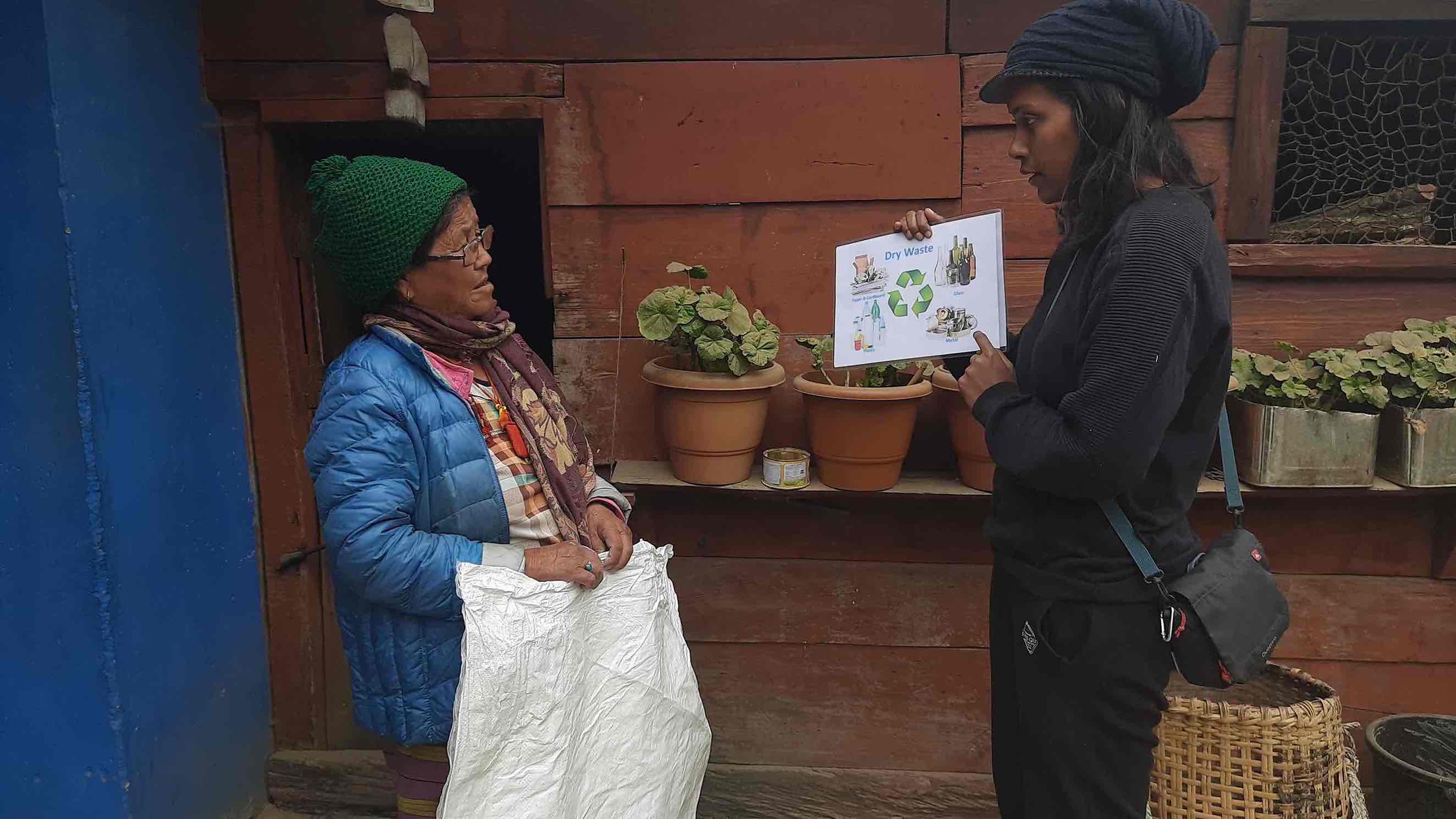
Elaborating on other initiatives taken by the administration, Akriti continues, “We’ve been conducting numerous awareness activities. We have also been issuing penalties, according to state bylaws, especially in town areas. We are encouraging people to avoid using plastic and opt for local alternatives, as tribal communities often have sustainable options.”
“You might have noticed that in most of our festivals, we use bamboo glasses instead of plastic bags. We encourage the use of local alternatives and traditional eating methods to minimise plastic waste. Especially on the riverside, we’ve always seen that the areas are kept clean,” she adds.
The administration is also engaging with homestay owners in the district, advising them to inform tourists about the importance of proper waste disposal.
Akriti is pleased that the people of Sangti Valley, with the help of the Northeast Waste Collective, are successfully balancing development with sustainability. “We, as the district administration, are also supporting their efforts,” she says. “It’s the SHG ladies who are leading the initiative, and they are ensuring its success. We’re seeing positive feedback for the project.”
The West Kameng district magistrate also informs that to address the significant issue of transportation, the administration and the NGO are discussing various measures, including a collaboration with the Indian Army.
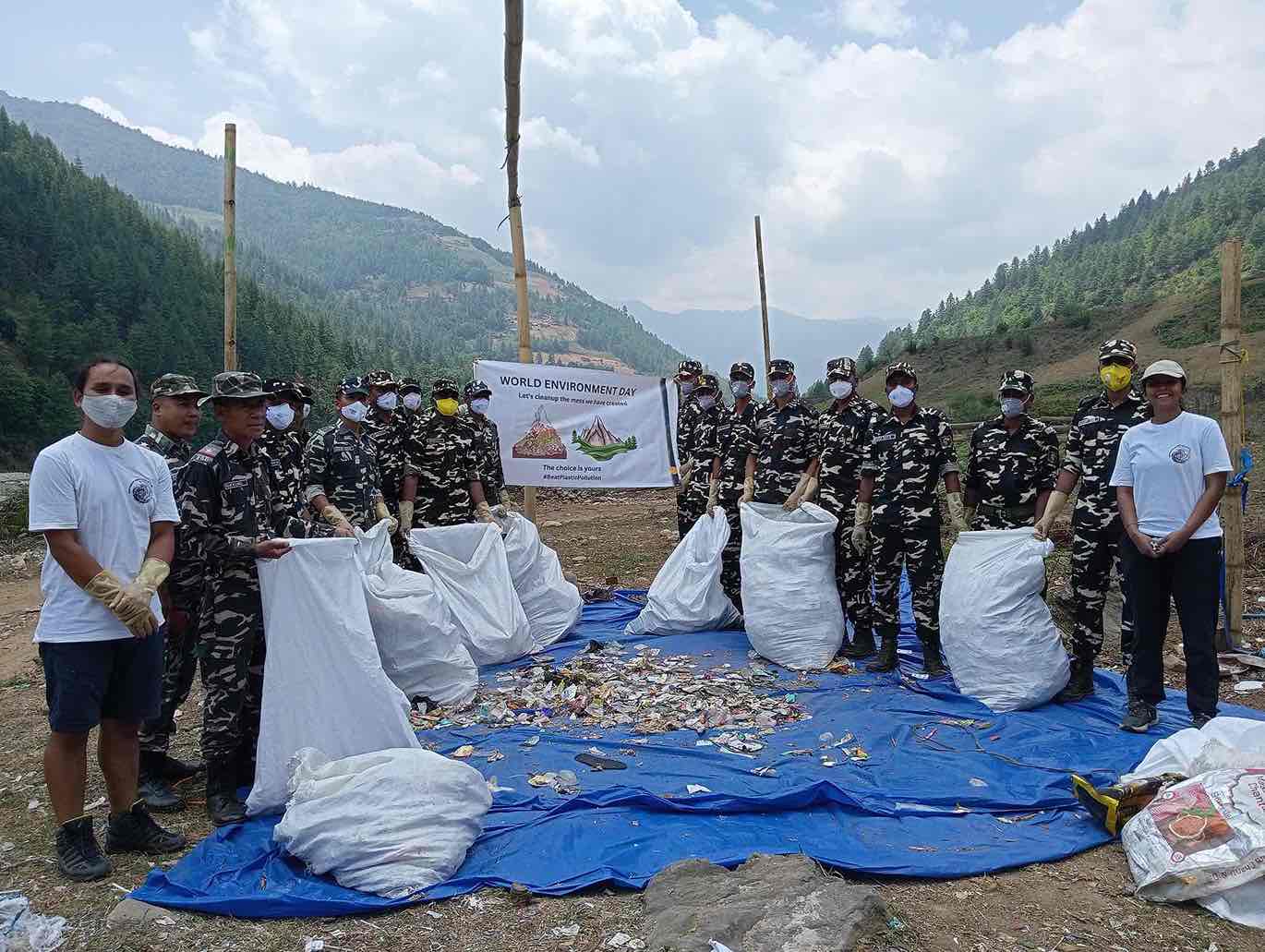
Regarding the Northeast Waste Collective, Akriti says, “Their biggest advantage is their involvement with the community; that’s the most important aspect of waste management.”
“For Ittisha, once you’ve started something, even if you’ve failed, you should try to maintain your enthusiasm and motivation and strive for the best,” says Merwyn. “Today, whatever is happening in Sangti, the complete credit goes to Ittisha because she persisted.”
(Edited by: Pranita Bhat; Images: Northeast Waste Collective)
